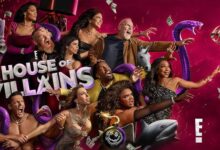House of Villains: Exploring the Fascination with Fictional Bad Guys?

In the vast universe of fiction, one element that consistently intrigues audiences across genres is the villain. They are mysterious, multifaceted, and often have complex motivations, making them unforgettable. The House of Villains concept combines some of the most iconic, notorious, and compelling fictional antagonists under one roof. This concept allows fans to explore the appeal of the dark side and understand why villains have captivated us for so long.
Why Are Villains So Captivating?
One might wonder why villains hold such a magnetic appeal. After all, they are the ‘bad guys,’ often wreaking havoc on heroes and the worlds they inhabit. The answer lies in their complexity. Villains are not simply ‘evil’ for the sake of being so. Often, they have tragic backstories, personal motivations, or philosophies that make them relatable and sometimes even sympathetic. This emotional depth makes the House of Villains an alluring concept for audiences.
The Evolution of Villains in Pop Culture
Villains have transformed significantly over the years, reflecting changes in society’s values and fears. In early literature and cinema, villains were often one-dimensional, representing pure evil. However, modern narratives delve deeper into a villain’s psyche, portraying them as multi-layered characters with moral dilemmas. The House of Villains showcases this evolution, presenting villains as complex individuals with various personalities, goals, and emotional depths.
Iconic Members of the House of Villains
The House of Villains concept invites audiences to imagine a realm where iconic villains coexist. From comic book nemeses like the Joker and Loki to fantasy villains like Lord Voldemort and Sauron, each villain brings unique traits and stories. These villains aren’t merely obstacles for the heroes; they represent conflicting ideologies, moral challenges, and existential threats that make their narratives compelling.
The Joker: Chaos Incarnate
Perhaps one of the most famous residents of the House of Villains is the Joker. Known for his anarchistic philosophy and chaotic methods, the Joker challenges the notion of order in Gotham City. His motives are complex, and his relationship with Batman is deeply personal, making him an unforgettable character.
Loki: The Trickster with a Heart
Loki, the Norse god of mischief and a prominent character in the Marvel Universe brings another flavour of villainy to the House of Villains. As a character, he wavers between villain and anti-hero, driven by his insecurities, familial conflicts, and desire for recognition. Loki’s mischief and complex personality add depth to the typical villain archetype.
Voldemort: Power-Hungry Dark Lord
Lord Voldemort, the primary antagonist in the Harry Potter series, brings an element of dark magic and pure malice to the House of Villains. His ruthless ambition and disdain for anyone he perceives as ‘lesser’ make him a fearsome villain. Voldemort’s character explores the theme of power and the lengths one will go to attain it.
The Moral Ambiguity of Villains
The House of Villains reveals that many antagonists operate within a grey moral zone. They are not evil simply to oppose the hero but often pursue what they believe to be just or necessary. For example, Killmonger in Black Panther believes in fighting oppression despite his extreme methods. This moral ambiguity bridges villains and audiences, showing that even villains can have relatable struggles and valid motivations.
Psychological Appeal of the House of Villains
From a psychological perspective, villains allow us to confront our darker sides. By identifying with a villain’s experiences or dilemmas, we explore suppressed emotions and desires within a safe, fictional space. This phenomenon, often called ‘shadow integration’ in psychology, suggests that acknowledging and understanding the darker aspects of humanity can be empowering. The House of Villains provides an environment for audiences to engage with these feelings without real-world consequences.
Villains as Anti-Heroes
The House of Villains also includes characters who operate in a grey area between heroism and villainy. Characters like Deadpool, who defy conventional morals yet fight for justice in their way, illustrate how the line between hero and villain can blur. Anti-heroes have become more prevalent in recent years, demonstrating that audiences are drawn to characters who are not purely good or evil but a mixture of both.
Impact of Villains on Heroes and Plot Development
Villains are essential in driving the hero’s journey. Without a compelling villain, the hero’s struggles would lack depth. The House of Villains embodies this dynamic, emphasizing how essential villains are to plot development. Heroes often grow and transform in response to the obstacles villains create, making antagonists indispensable to storytelling.
Cultural Reflections in the House of Villains
Villains often reflect societal fears, prejudices, or moral dilemmas. The House of Villains concept allows audiences to see how cultural influences shape these characters. For example, Cold War-era villains were often portrayed as threatening superpowers, while modern villains may reflect themes of corporate greed, technological overreach, or political manipulation. This shifting portrayal mirrors changing societal values and concerns.
How the House of Villains Concept Has Inspired Media
The House of Villains has captivated audiences in traditional media and inspired spin-offs, crossovers, and even amusement park attractions. Media companies capitalize on the fascination surrounding these characters by creating spaces where villains are celebrated. From fan conventions to themed parties, the House of Villains has moved beyond the screen, inviting fans to immerse themselves in the world of villains.
Conclusion: The Enduring Allure of the House of Villains
The House of Villains concept reveals that the fascination with antagonists is more than a superficial interest in ‘bad guys.’ It highlights our complex relationship with morality, identity, and personal growth. Villains challenge us, make us question our beliefs, and ultimately make stories more prosperous and more engaging. In this house, each villain brings a unique perspective on power, justice, and humanity. This complexity ensures the House of Villains will continue to captivate audiences, reminding us that every story needs a little darkness to make the light shine brighter.
